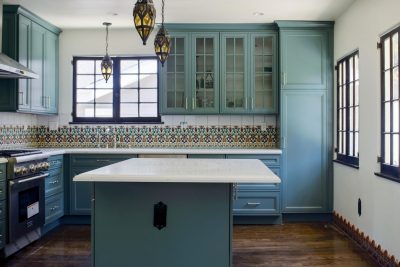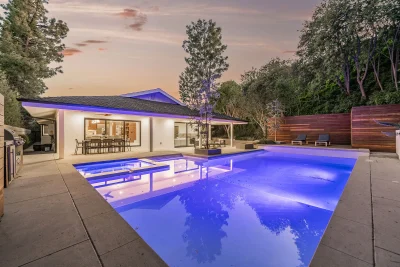
Kitchen Remodel Design Choices: A Guide to Finding Your Style
May 17, 2023
Introduction: Kitchen Remodel Design Choices
Are you considering a kitchen remodel but feel overwhelmed by the plethora of design choices? If so, you’re in the right place. This article, titled “Exploring Kitchen Remodel Design Choices: A Guide to Finding Your Style,” will help you navigate through the maze of kitchen design styles. We’ll dive deep into the most popular kitchen remodel design choices, comparing their unique features, benefits, and drawbacks. By the end, you’ll be equipped to make an informed decision about your dream kitchen’s design.
The Evolution of Kitchen Remodel Design Choices
Kitchen design evolves to reflect changing needs and tastes of homeowners. Once a purely functional space tucked away at the back of the house, the kitchen has become the heart of the home. With advancements in technology and shifts in lifestyle, kitchen remodel design choices have evolved significantly over the years.
In the early 20th century, kitchens were typically small and utilitarian, designed for efficiency and easy cleanup. As time progressed, kitchens grew in size, becoming more open and integrated with other living spaces. This transformation led to the development of a variety of design styles, each reflecting different aesthetic preferences and functional needs.
Traditional Kitchen Design
Traditional kitchen designs have timeless appeal that never falls out of style. They feature classic details, warm colors, and ornate decorative elements that create an inviting, homey feel. Wood cabinetry, often with raised panel doors and crown molding, is a staple of traditional kitchen design.
Despite their old-world charm, traditional kitchens can be equipped with modern appliances and amenities. For instance, a traditional kitchen might feature a state-of-the-art range set within a beautifully crafted wood surround. This blend of modern functionality and classic aesthetics is one of the key appeals of traditional kitchen design.
However, traditional kitchens may not appeal to everyone. Some may find the details too fussy or the overall look too formal. If you prefer a cleaner, more minimalist aesthetic, a modern or contemporary kitchen might be a better fit.
Modern Kitchen Design
Modern kitchen designs are characterized by their sleek, minimalist aesthetics and emphasis on functionality. Inspired by the Bauhaus movement of the early 20th century, modern kitchens avoid decorative elements in favor of simple, geometric forms. Materials like stainless steel, glass, and concrete are commonly used, often with a high-gloss finish.
Modern kitchens are ideal for those who value efficiency and order. With their flat-panel cabinetry and integrated appliances, they offer a streamlined, clutter-free environment that’s perfect for cooking and entertaining. Moreover, the neutral color palette of modern kitchens serves as an excellent backdrop for colorful cookware and accessories.
However, the minimalist aesthetic of modern kitchens may feel cold or impersonal to some. If you prefer a warmer, more eclectic look, a transitional or farmhouse kitchen might be a better choice.
Comparing Kitchen Remodel Design Choices
Every kitchen design style has its unique charm, and the best choice for you depends on your personal taste, lifestyle, and the overall style of your home. In the following sections, we’ll compare various kitchen remodel design choices to help you make an informed decision.
Transitional Kitchen Design
Transitional kitchens strike a balance between traditional and contemporary design elements, resulting in a timeless yet updated look. They often feature a mix of natural materials like wood with modern finishes like stainless steel or glass.
Transitional kitchens can cater to a wide range of tastes, making them a popular choice among homeowners. They offer the warmth and detail of traditional design without its sometimes overly ornate aesthetics. At the same time, they incorporate the sleek lines and minimalist appeal of modern design.
One potential downside of transitional kitchens
is that their eclectic nature can make them tricky to design. Striking the right balance between traditional and modern elements requires a keen eye for design and careful planning.
Farmhouse Kitchen Design
Farmhouse kitchens evoke a sense of nostalgia, with design elements reminiscent of old country homes. They often feature open shelving, freestanding furniture, and a large farmhouse sink. Natural materials like wood and stone are commonly used, often with a distressed or weathered finish for added rustic charm.
Farmhouse kitchens are perfect for those who love the casual, welcoming vibe of country living. They offer a relaxed, inviting space that’s ideal for family gatherings and casual entertaining. Plus, they have a unique charm that can addcharacter to any home.
However, farmhouse kitchens may not appeal to everyone. Some may find the rustic aesthetic too casual or the lack of modern amenities inconvenient. If you prefer a sleek, contemporary look, a modern or transitional kitchen might be a better fit.
Traditional Kitchen Design Choices
Classic Cabinetry
Traditional kitchens are often defined by their classic cabinetry. This style typically includes raised-panel doors, ornate molding, and intricate design details. The choice of materials is also crucial, with woods such as cherry, oak, or mahogany popular for their rich tones and timeless appeal.
When planning your traditional kitchen remodel, consider the overall aesthetic you want to achieve. Glazed or antique finishes can add a touch of vintage charm, enhancing the classic appeal of the kitchen.
Ensure the style of your cabinetry complements other design elements in your kitchen. The goal is to create a harmonious and cohesive look that exudes warmth and elegance.
Countertops and Backsplashes
In a traditional kitchen, countertops and backsplashes play a significant role in establishing the design aesthetic. Natural materials like granite and stone are popular choices, offering a sense of luxury and longevity, perfect for a style that values timeless elegance.
Backsplashes in a traditional kitchen may feature hand-painted tiles or tumbled marble. The color schemes are often muted or earthy, creating a warm and welcoming ambiance.
Incorporate these elements in your kitchen remodel design choices. They not only add to the aesthetic appeal but also contribute to the functionality and durability of your kitchen.
Traditional Kitchen Layouts
Traditional kitchen layouts often favor function over form, incorporating design elements that facilitate efficient cooking and dining. One such layout is the “kitchen triangle”, where the stove, sink, and refrigerator are placed in a triangle pattern for easy movement between these key areas.
Island and peninsula layouts are also common in traditional kitchens. These provide additional counter space and seating, enhancing the kitchen’s functionality.
Remember, the best kitchen layout maximizes efficiency while maintaining aesthetic appeal. Consider your space and how you use it when deciding on the perfect layout for your traditional kitchen remodel.
Modern Kitchen Design Choices
Sleek Cabinetry
Modern kitchens are characterized by sleek, streamlined cabinetry. Flat-panel or slab-door cabinets are a signature feature, often made from materials like glossy plastic laminate or wood veneer. The focus is on simplicity and minimalism.
Often, modern kitchen cabinets lack ornate details. Hardware is either simplistic or entirely absent, contributing to the clean, uncluttered look that defines modern design.
When considering your kitchen remodel design choices, think about how the style of your cabinets can enhance the overall modern aesthetic. Sleek, minimalist cabinets can serve as a striking contrast to more traditional elements in your kitchen.
Countertops and Backsplashes
In modern kitchens, countertops and backsplashes are often bold and striking. Materials like stainless steel, concrete, or quartz are popular for their sleek, industrial look. These materials not only look great but are also durable and easy to maintain, making them practical choices for a kitchen remodel.
Backsplashes in modern kitchens often make a strong visual impact. You might see subway tiles arranged in a herringbone pattern or large-format tiles in dramatic colors.
Remember, the goal in a modern kitchen is to create a clean, crisp look. Your countertops and backsplash should work together to achieve this aesthetic.
Modern Kitchen Layouts
Modern kitchen layouts are all about creating a functional, user-friendly space. Open floor plans are popular in modern design, with kitchens often blending seamlessly into living or dining areas.
The kitchen island is a key element in modern kitchens. It serves as a focal point, its minimalistic design and multifunctional use contributing to the overall sleek, modern aesthetic.
When planning your kitchen remodel, consider how a modern layout could enhance the functionality and style of your space. An open, user-friendly design can transform your kitchen into a social hub, perfect for entertaining guests.
Transitional Kitchen Design Choices
Cabinetry that Blends Old and New
Transitional kitchens strike a balance between traditional charm and modern simplicity. The cabinetry often embodies this balance, featuring a simple design with a touch of classic detail, such as shaker-style doors.
The color palette in transitional kitchens tends to be neutral. Whites, greys, and natural wood tones dominate, creating a calm and balanced aesthetic.
In planning your kitchen remodel, consider how transitional cabinetry could work in your space. This style of cabinetry can provide the perfect balance between the old and the new, creating a kitchen that is both functional and stylish.
Transitional Countertops and Backsplashes
In a transitional kitchen, the design often involves mixing different materials. You might see a marble countertop paired with a subway tile backsplash, or a quartz countertop with a glass mosaic backsplash.
The aim of transitional design is to blend the warmth and welcome of traditional design with the clean lines and neutral color palettes of contemporary style. The countertops and backsplash play a key role in achieving this balance.
As you make your kitchen remodel design choices, think about how the materials and colors of your countertops and backsplash can work together to create a transitional aesthetic.
Transitional Kitchen Layouts
Transitional kitchen layouts aim to combine the best of traditional and modern design. This might involve incorporating a classic kitchen triangle layout, but with a modern twist, such as sleek appliances or an open-plan design.
Islands and peninsulas are common in transitional kitchens, providing additional work and dining space. These elements can be designed to match either the traditional or modern aspects of the kitchen, or to blend the two.
Remember, the goal in a transitional kitchen is balance. As you plan your remodel, consider how your layout can best combine functionality with a blend of traditional and modern aesthetics.
Conclusion:
Choosing the right design style for your kitchen remodel can be a challenging yet exciting process. The key is to consider your personal taste, lifestyle, and the overall style of your home. Whether you prefer the classic charm of a traditional kitchen, the sleek efficiency of a modern kitchen, the balance of a transitional kitchen, or the rustic appeal of a farmhouse kitchen, there’s a design style out there that’s perfect for you.
Remember, your kitchen is the heart of your home. Make sure your kitchen remodel design choices reflect your personality and suit your lifestyle. Happy remodeling!


